Uncover Saint Emilion's vibrant flavors and culinary gems with our expert guides. Plan an unforgettable trip now!
Read more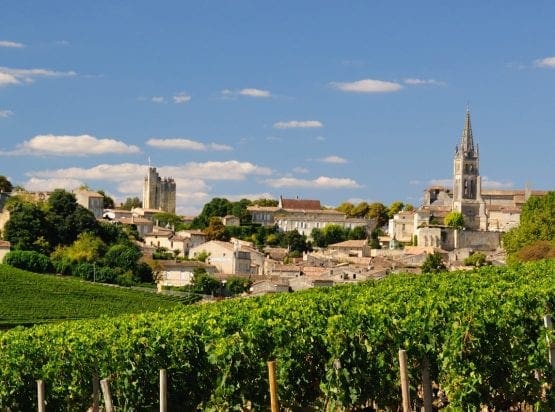
EXPLORE ALL OUR BORDEAUX WINE REGIONS GUIDE
Last updated: April 4, 2025
On the right bank of the Gironde lie the vineyards of Bourg. You may not be familiar with or have shown interest in the zone, and we don’t blame you. Lost in the hype that engulfs the Medoc, Pomerol, and Saint-Emilion, Côtes de Bourg does not produce labels for millionaires.
Instead, it quietly and confidently gets on with the business of making appetizing, balanced, and fresh red (and white) wines that belong at the dinner table. Granted, the understated wines of Bourg are unlikely to electrify the auction house circuit in 2024. But they are worth discovering and appreciating despite their lack of renown.
Discover More About French Wine
The vineyards to the northwest of Libourne are of ancient origin. After the Romans conquered Gaul in the last century BC, Caesar’s armies constructed forts along the shore of the Gironde, taking advantage of their strategic position in the estuary. Before too long, vines were planted on the slopes that flanked Bourg and its neighbor Blaye to the north. Roman vintners, known for their sweet, herb-infused concoctions, saw their product travel to every corner of the vast Western Roman Empire, which lasted until the 5th century AD.
After its collapse in 476, the Frankish Merovingian and Carolingian dynasties ruled for over 500 hundred years, with the Carolingians wielding power from Laon in northern France. Their successful campaigns against the Visigoths and Vandals earned the Franks a deserved reputation as fierce warriors.
However, the Frankish tradition of succession, in which the king was followed by all his sons, inevitably resulted in ongoing power struggles and internal civil conflicts. Eventually, the Frankish kingdom disintegrated into a series of small feudal states. Its resurgence came in 800 AD after Charlemagne was crowned Holy Roman Emperor by Pope Leo III. Meanwhile, the coronation of Hugh Capet in 987 heralded the birth of the Capetian dynasty, although the king’s modest domains only encompassed Paris and Orleans.
Rise of the Left Bank
However, Bordeaux’s heyday did not occur until the 12th century. After Eleanor of Aquitaine married Henry of Anjou in 1155, trade between England and its French vassal prospered; Bordeaux merchants quickly took advantage of these favorable conditions, exporting sweet wines to the shores of southern England and the Low Countries. Regions like Bourg prospered in the Middle Ages, as the estuary provided easy access to northern European markets.
Meanwhile, the Left Bank of the Medoc was a mosquito-ridden swampland during this period. Dutch Engineers drained it in the 17th century, after which viticulture became a mainstay of life in the communes of Margaux, Pauillac, and Saint-Julien. Nevertheless, the vineyards of Bourg and Blaye had a considerable head start.
Decline and Resurgence in the Modern Era:
Unfortunately, both regions saw their fortunes decline in the 19th and 20th centuries due to a combination of phylloxera and economic stagnation in Bordeaux. While the best wines of Pauillac and Margaux disappeared into the luxury goods category, the right bank of the Gironde floundered. Only in recent years have investment and a renewed dedication from the emerging generation rescued the reputation of these stagnating wine zones.
In 2009, a new umbrella designation was introduced, designed to unify five divergent appellations under one banner. It is called Côtes de Bordeaux and Bourg was intended to become Bourg: Côtes de Bordeaux contrôlée. However, the area’s growers refused to give up their traditional name, so Bourg was excluded from this project and retained its original title.
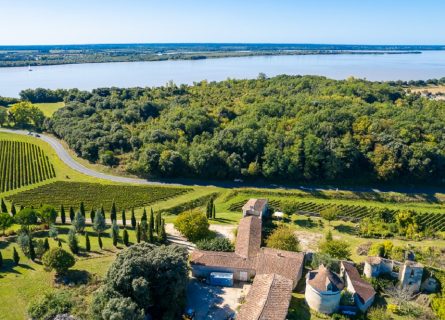
The Côtes de Bourg is found northwest of Libourne on the right bank of the Gironde estuary. The area under vine is considerably smaller and more compact than Blaye: Côtes de Bordeaux, and many critics regard the wines of Bourg as being innately superior. That may or may not be accurate. However, the best producers are in the same league as the Cru Bourgeois of the Haut-Medoc.
From Sweet Whites to Red Dominance
In 1936, the Côtes de Bourg received the prestigious AOC status for its red wines, followed by its white wines in 1945. Although historically, both Bourg and Blaye were celebrated for their sweet white wines, today, only about 40 hectares in Bourg are dedicated to white grape varieties.
The dominant red variety is now Merlot, a flexible grape that suits the climate and soils far better than Cabernet Sauvignon. The latter can be challenging to ripen here unless the soils have a high percentage of gravel topsoil.
Nevertheless, a small percentage of Cabernet Sauvignon is usually included in the blends, topped up with Cabernet Franc and even Malbec—almost unheard of in the Medoc. But growers in Bourg are more fond of this variety than their counterparts on the Left Bank, producing herbal and spicy wines from Argentina’s flagship style, known locally as Côt.
Exploring the Landscape
Approximately 1,640 hectares of vines grow across 15 communes surrounding Bourg, including Comps, Lansac, Mombrier, and Tauriac. Similar to Blaye, clay-limestone dominates the soils, though patches of gravel and sand also exist. Thanks to the proximity of the Gironde, frost and hail do not occur frequently in Bourg, even during cold winters.
Nevertheless, grapes tend to ripen at a slower pace than in the Left Bank, as the macroclimate is cooler overall. Blessed with omnipresent breezes, the Côtes de Bourg enjoys natural protection against fungal diseases, allowing for denser vine plantings that limit the need for mechanization.
Most agree that the finest sites are located on the slopes overlooking the estuary, where south-facing climats produce ripe and healthy grapes. However, don’t overlook the inland areas that produce excellent wines.
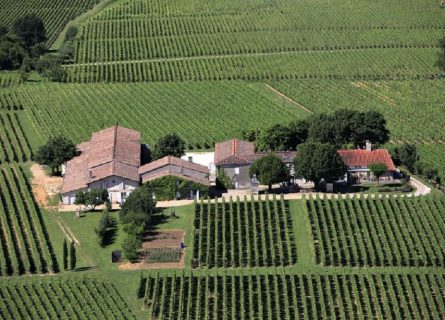
Bourg is not a region dominated by major brands and international conglomerates. Indeed, family-run estates are the mainstay of Bourg’s economic and social life, and the average size of a typical farm is under 12 hectares. Nevertheless, the quality of winemaking has improved considerably in recent times, while yields have been lowered in the pursuit of quality.
Some growers have been slow to catch on, but the simple truth is that consumer tolerance for green, diluted Bordeaux at low prices has all but evaporated. People would rather pay a little more, albeit less frequently, and drink a good quality bottle of wine. That necessitates moderate yields, green harvesting, leaf pulling, and rigorous selection in the cellar. Unripe berries should be discarded, and yields should be no higher than 55 hectoliters per hectare.
Evolution of Winemaking Practices
The traditional approach in Bourg emphasized a lengthy maceration in old wooden vats at high temperatures. Unfortunately, this could produce a very tough and tannic red style, as the clay-rich terroir naturally gives powerfully structured wines; over-extraction was a hallmark characteristic of Bourg winemaking until the early 20th century.
Thankfully, the quality-conscious estates have invested in the latest cellar equipment, and it shows. Green tannins were also a concomitant of early harvests, conducted in a rush at the behest of the cooperatives. However, their power and influence have diminished significantly as producers increasingly bottle their wines at the source.
Innovations and Excellence
Château Brulesécaille is just one of many properties now producing exceptional wines in Bourg. Much of this is down to the meticulous winemaking at the estate: hand-harvested Merlot is subject to a cold soak (pre-fermentation maceration) to extract gentle tannins, further softened with some micro-oxygenation. The wines undergo vinification in steel tanks and age for at least 12 months in 25-30% new oak.
Meanwhile, the chateau ferments and ages its superb Sauvignon Blanc white in about 50% new wood. The results in bottle speak for themselves: fruit-driven wines with good structure and beautiful freshness.
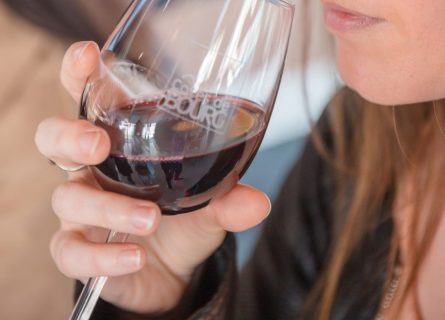
Like so many appellations in France, Côtes de Bourg has a chequered and complex history. For most of the latter half of the 20th century, its community of winegrowers resigned themselves to a fate unworthy of such noble soils and grape varieties.
That fate involved selling mediocre wines, based on fruit cropped at high yields, to the powerful negociants of Bordeaux; their generic blends, available at all good supermarkets and discounters worldwide, relied on cheap wines from Bordeaux’s less exalted regions. Yet the market for these budget labels started to dwindle in the late 1980s, much to the chagrin of the merchant houses.
New Generation’s Influence
At the same time, an influx of younger growers, seduced by the availability of (relatively) cheap land, started to migrate towards Blaye and Bourg. However, they drastically lowered yields and renovated and rebuilt dilapidated cellars, refusing to follow in their parents’ footsteps.
Inspired by pioneers like Francois Mitjaville (he also owns Chateau Tertre-Roteboeuf in Saint-Emilion), more investors started to purchase vineyards in the zone. They have achieved nothing less than a complete rejuvenation of Bourg’s reputation, proving that the appellation can make wines as perfumed and structured as their more famous Right Bank cousins.
Today’s finest Bourg reds showcase pure fruit, a firm yet ripe structure, and finesse. A mature vintage will showcase all of Merlot’s tertiary characteristics – a mosaic of sweet red fruits, black truffles, leather, and tobacco. Forget about speculating or investing: Côtes de Bourg wines are made to be enjoyed.
Colombard is a white wine grape varietal, most famously known for its use in the production of Cognac and Armagnac.
Find out moreExplore the allure of the Semillon grape & its legendary connection to Sauternes. Unveil the history & flavors of this captivating varietal. Cheers!
Find out moreThe sauvignon blanc grape varietal, originally from the Bordeaux region of France, is now one of the world's most loved white varieties.
Find out moreSauvignon Gris is a pink-berried mutation of Sauvignon Blanc, originally likely from Bordeaux but now also prominent in Chile. It is a relatively obscure grape, making up only 2% of Bordeaux's white wine grape production. Nearly extinct due to the phylloxera epidemic, its revival is credited to Jacky Preys, a winemaker from the Loire Valley.
Muscadelle is a white grape varietal, primarily used for blending in the production of sweet white wines in the Bordeaux region.
Find out moreCabernet Franc grape is a close relative of Merlot and Cabernet Sauvignon and is the principal blending grape used in Bordeaux.
Find out moreDiscover the irresistible allure of Cabernet Sauvignon—a worldwide favorite with robust, dark-bodied flavor. Unleash your wine journey today!
Find out moreDelve into Malbec, a dark, small grape native to France, cherished for its thick skin and exceptional flavors. 🍇🍷
Find out moreMerlot is the most cultivated grape in Bordeaux and closely related to Cabernet Franc
Find out moreBourg is not a place to see and be seen. Quite the opposite, in fact: it has all the glamor and glitz of a station wagon. However, there are some excellent restaurants in the various towns and villages of the appellation, dishing up straightforward Bordeaux fare in convivial surroundings. Many source their produce from local covered markets, such as fresh oysters, Atlantic fish, duck, and Medoc lamb. The best venues are bustling bistros with enticing smells and a changing blackboard menu of seasonal delights.
A Gastronomy Guide to the Cuisine of Bordeaux: Read more

Uncover Saint Emilion's vibrant flavors and culinary gems with our expert guides. Plan an unforgettable trip now!
Read more
Discover the best food and wine experiences in Bordeaux with our travel guide. We'll help you plan the perfect trip from Michelin-starred restaurants to hidden gem wineries. Book now!
Read more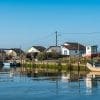
Uncover Arcachon vibrant flavors and culinary gems with our expert guides. Plan an unforgettable trip now!
Read moreIf you would like us to customize an exclusive luxury tour, contact us and let us know your travel plans. We offer luxury food and wine tours for private groups of a mininium two guests. In addition, all of our private, chauffeured tours are available year-round upon request.

